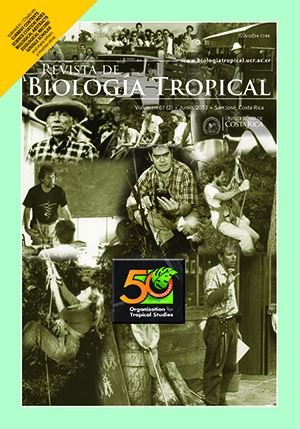Abstract
Sphoeroides testudineus is a dominant species in the coastal systems of Yucatán. Because of its wide distribution, occurrence and abundance performs an important functional role in coastal ecosystems. We assessed the trophic preferences and trophic-level variation in space and time for this species in Ria Lagartos lagoon, an hyperhaline ecosystem located Northwest of Yucatan Peninsula. The specimens were collected bimonthly during two annual periods (2004-2005 and 2007-2008) in 23 sites distributed along the system into four zones (marine, channel, Coloradas West and Coloradas East). Spatial and seasonal trophic variations were evaluated using canonical correspondence analysis (ACC). In a total of 382 individuals, 68 food resources included in 20 trophic groups were obtained. Higher relative importance index values (IIR) were obtained for bivalves, gastropods and macrophytes. Seasonal trophic variation showed that bivalves and gastropods were consumed along the year, while macrophytes were a preferential food during rains and windy seasons. Spatial variation indicates lower gastropods consumption at the inner zone of the system, and the opposite ocurred with bivalves. The consumption of macrophytes may be due to their greater abundance during rains and in the channel zone. The ACC showed that spatial trophic variation was due because of the abundance of the preferential preys (bivalves, gastropods), while seasonal differences by the secondary (amphipods, eggs, nematodes, brachyuran, detritus, nematodes). The results contribute to the biological knowledge of the species and highlight the importance and trophic function of S. testudineus for the energy transfer from the benthos to higher trophic levels of the food chain.##plugins.facebook.comentarios##
Downloads
Download data is not yet available.






